Healthcare Diversity Resources
Books
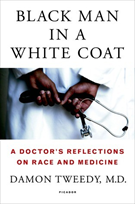
Black Man in a White Coat: A Doctor’s Reflections on Race & Medicine by Damon Tweedy, M.D.
“Black Man in a White Coat examines the complex ways in which both black doctors and patients must navigate the difficult and often contradictory terrain of race and medicine. As Tweedy transforms from student to practicing physician, he discovers how often race influences his encounters with patients. Through their stories, he illustrates the complex social, cultural, and economic factors at the root of many health problems in the black community.”
*Available on the CHBS Diversity Bookshelf
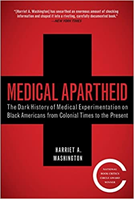
Medical Apartheid by Harriet A. Washington
“Medical Apartheid is the first and only comprehensive history of medical experimentation on African Americans. Starting with the earliest encounters between black Americans and Western medical researchers and the racist pseudoscience that resulted, it details the ways both slaves and freedmen were used in hospitals for experiments conducted without their knowledge—a tradition that continues today within some black populations.”
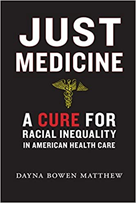
Just Medicine: A Cure for Racial Inequality in American Healthcare by Dayne Bowen Matthew
“Health disparities have remained stubbornly entrenched in the American health care system―and in Just Medicine Dayna Bowen Matthew finds that they principally arise from unconscious racial and ethnic biases held by physicians, institutional providers, and their patients.”
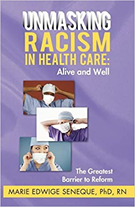
Unmasking Racism in Health Care: Alive and Well by Marie Edwige Seneque, PhD, RN
“African Americans, Hispanics, and Native Americans represent 27 percent of the United States population, yet they constitute less than 11 percent of nurses and 8 percent of physicians. In Racism in Health Care: Alive and Well, author Marie Edwige Seneque discusses how this long history of racism continues to shortchange the national recruitment and retention of minority health care providers which contributes to racial and ethnic health disparities”
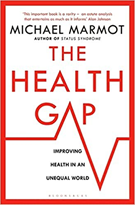
The Health Gap: The Challenge of an Unequal World by Michael Marmot
Conventional approaches to improving health have emphasised access to technical solutions - improved medical care, sanitation, and control of disease vectors; or behaviours - smoking, drinking - obesity, linked to diabetes, heart disease and cancer. These approaches only go so far… What makes these health inequalities unjust is that evidence from round the world shows we know what to do to make them smaller. This new evidence is compelling. It has the potential to change radically the way we think about health, and indeed society.”
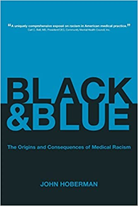
Black & Blue: The Origins and Consequences of Medical Racism by John Hoberman “Black & Blue is the first systematic description of how American doctors think about racial differences and how this kind of thinking affects the treatment of their black patients. The standard studies of medical racism examine past medical abuses of black people and do not address the racially motivated thinking and behaviors of physicians practicing medicine today”
Articles
Jin XW, Slomka J, Blixen C. Cultural and clinical issues in the care of Asian patients. Clev Clin J Med. 2002;69(1) 50-61. “Special problems of Asian patients have considerable impact on diagnosis and treatment, and the number of persons of Asian ancestry seen in primary care in the United States is increasing. Knowledge of how to provide optimal care despite language barriers, low socioeconomic status, different health beliefs and practices, and medical issues unique to this heterogeneous group is crucial to competent health care.”
Gordon-Larsen P, Nelson MC, Page P, Popkin BM. Inequality in the built environment underlies key health disparities in physical activity and obesity. Pediatrics. 2006;117(2):417-424. doi:10.1542/peds.2005-0058 “Environmental factors are suggested to play a major role in physical activity (PA) and other obesity- related behaviors, yet there is no national research on the relationship between disparity in access to recreational facilities and additional impact on PA and overweight patterns in US adolescents.”
Pool LR, Ning H, Lloyd-Jones DM, Allen NB. Trends in racial/ethnic disparities in cardiovascular health among US adults from 1999-2012. JAHA. 2017;6(9). “In the United States, there are persistent racial and ethnic disparities in cardiovascular disease morbidity and mortality. National efforts have focused on reducing these disparities; however, little is known about the long-term trends in racial/ethnic disparities in cardiovascular health (CVH).”
Saffer H, Dave D, Grossman M, Leung LA. Racial, Ethnic, and Gender Differences in Physical Activity. J Hum Cap. 2013;7(4):378-410. doi:10.1086/671200 “This study examines racial, ethnic and gender (REG) differentials in physical activity (PA), a significant input into health production and human capital investments… Estimates suggest significant REG differentials in work-related and various modes of non-work PA, with 30–65% of these differentials attributed to differences in education, socioeconomic status, time constraints, and locational attributes. These conditional PA differentials are consistent with and may play a role in observed REG disparities in health outcomes.”
Baciu A, Negussie Y, Geller A, et al. Committee on Community-Based Solutions to Promote Health Equity in the United States. Communities in Action: Pathways to Health Equity. Washington (DC): National Academies Press (US); 2017 Jan 11. 2, The State of Health Disparities in the United States.
Best Practices Working with Asian American Patients by Geetha Jayaram, M.D.

